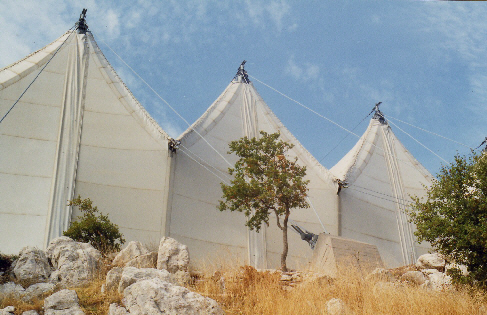| This is the most remote of the
sanctuaries, 1100 metres high on Mount Kotilion, and now
9 miles from the nearest habitation. (The ravines on the
mountain, basses or vasses,give the region
its name.) The temple was extensively restored at the
beginning of the last century and is now the best
preserved temple on the mainland after the Hephaeston in
Athens. Pausanius made the journey here in the 2nd
century AD and said of the temple: 'Of all the temples in
Peloponnese, next to the one at Tegea, this may be placed
first for beauty of the stone and the symmetry of its
proportions.'
According
to Pausanias, but now doubted by some, the temple was was
dedicated by the people of nearby Phigália to Apollo
Epikourios (the helper) in thanks for delivering them
from the plague of 429 BC (the same one which killed
Perikles). It was thought by Pausanias to have been
designed by Iktinos, one of the architects of the
Parthenon, but this is the subject of much scholarly
debate: some doubting that the great Iktinos would have
bothered himself with such a 'provincial' site, others
arguing that Iktinos used this opportunity to experiment
with several innovations.
|
 |





